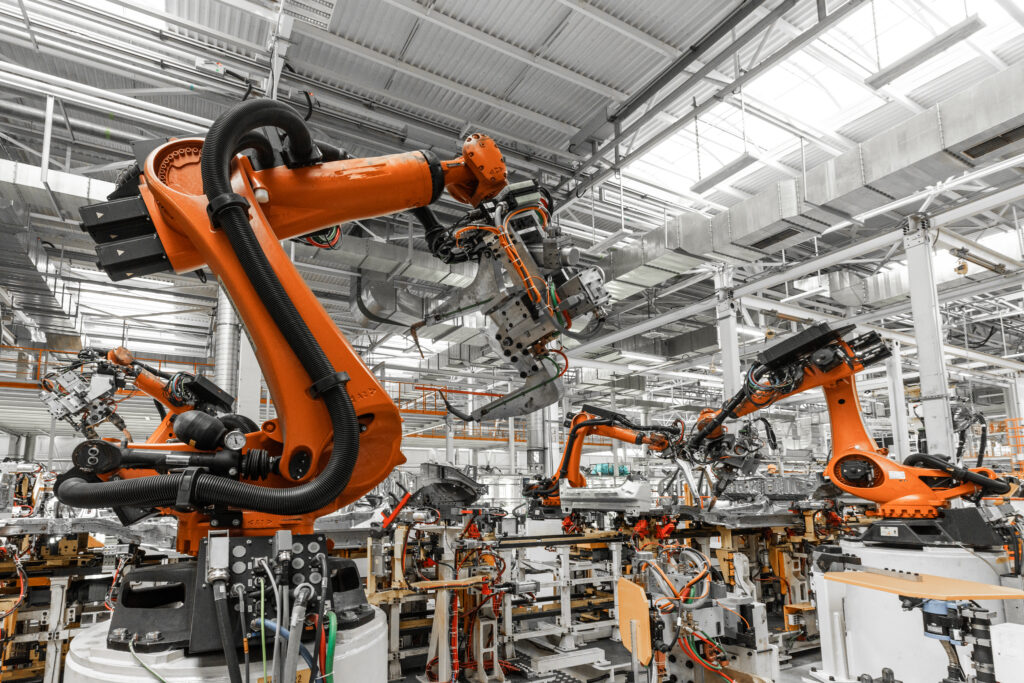In the ever-evolving landscape of manufacturing and industry, automation has emerged as a transformative force. As we step into the year 2024, the world of industrial automation is more exciting and promising than ever before. This blog post explores the latest trends, innovations, and the impact of industrial automation in 2024.
The Evolution of Industrial Automation
Industrial automation has come a long way since its inception. It began with simple mechanization processes in the early 20th century, gradually transitioning to numerical control systems, and eventually embracing computerization and robotics. Today, it’s at the cusp of a new era, driven by cutting-edge technologies like artificial intelligence (AI), the Internet of Things (IoT), and advanced robotics.
Automation Trends in 2024
- AI-Powered Robotics: In 2024, we are witnessing a significant rise in AI-powered robots that can handle complex tasks with precision and adapt to changing conditions. These robots can learn from experience, making them invaluable assets in manufacturing processes.
- IoT Integration: The integration of IoT devices into industrial automation systems continues to grow. Smart sensors and connected machines enable real-time monitoring, data collection, and predictive maintenance, reducing downtime and enhancing overall efficiency.
- Augmented Reality (AR) and Virtual Reality (VR): AR and VR technologies are making their way onto the factory floor, aiding in training, maintenance, and remote support. Workers can wear AR glasses to receive real-time information and instructions, improving productivity and safety.
- 5G Connectivity: The rollout of 5G networks has accelerated the adoption of automation. The low latency and high bandwidth of 5G enable seamless communication between machines, robots, and control systems, even in large-scale industrial settings.
- Collaborative Robots (Cobots): Cobots are becoming increasingly prevalent. These robots can work alongside humans safely and efficiently, offering a solution to labor shortages while maintaining high precision and quality.
- Autonomous Vehicles: Autonomous vehicles are transforming logistics and material handling within industrial environments. Self-driving forklifts and drones are streamlining warehouse operations, reducing costs, and minimizing human error.
- Machine Learning and Predictive Analytics: Advanced machine learning algorithms are being used to analyze vast amounts of data generated by automation systems. This allows for predictive maintenance, quality control, and process optimization.
Benefits of Industrial Automation in 2024
The adoption of industrial automation in 2024 comes with a multitude of benefits for businesses and society at large:
- Increased Efficiency: Automation reduces manual labor, speeds up processes, and minimizes errors, leading to higher production efficiency and lower operational costs.
- Improved Quality: Machines and robots perform tasks with unparalleled precision and consistency, resulting in products of higher quality.
- Cost Reduction: While the initial investment in automation technology can be substantial, the long-term cost savings in terms of labor, energy, and material waste are significant.
- Safety Enhancement: Dangerous and repetitive tasks can be delegated to robots, reducing the risk of workplace accidents and improving employee safety.
- Sustainability: Automation can optimize resource utilization, reduce energy consumption, and minimize waste, contributing to a more sustainable manufacturing ecosystem.
- Global Competitiveness: Companies that embrace automation are better positioned to compete on a global scale, as they can produce goods faster and more cost-effectively.

Challenges and Concerns
Despite the numerous advantages, the widespread adoption of industrial automation in 2024 also presents several challenges and concerns:
- Job Displacement: The automation of certain tasks can lead to job displacement, particularly for low-skilled workers. This highlights the need for upskilling and reskilling programs.
- Cybersecurity Risks: As industrial systems become more interconnected, they become vulnerable to cyberattacks. Protecting critical infrastructure from cyber threats is a top priority.
- Initial Investment: Implementing automation systems requires a substantial initial investment in technology and training, which may be a barrier for some businesses.
- Integration Complexity: Integrating new automation technologies with existing systems can be a complex and time-consuming process, requiring specialized expertise.
- Ethical Considerations: As AI becomes more prevalent in industrial settings, ethical concerns around decision-making and the potential for bias in AI systems must be addressed.
The Future of Industrial Automation
Looking ahead, the future of industrial automation is both promising and challenging. Several trends and developments are likely to shape the landscape:
- AI Autonomy: AI systems will continue to evolve, achieving higher levels of autonomy in decision-making and problem-solving, further reducing the need for human intervention.
- Human-Machine Collaboration: The line between human workers and machines will continue to blur as humans and robots work together seamlessly, with humans focusing on complex tasks that require creativity and critical thinking.
- Edge Computing: Edge computing will gain prominence, enabling real-time data processing and decision-making at the source, reducing latency and improving system responsiveness.
- Sustainable Automation: Automation technologies will increasingly prioritize sustainability, with a focus on energy efficiency and environmental responsibility.
- Regulatory Frameworks: Governments and regulatory bodies will play a crucial role in shaping the future of industrial automation by establishing standards and guidelines for safe and ethical automation practices.
Conclusion
As we step into 2024, industrial automation stands as a driving force behind the transformation of manufacturing and industry. The latest innovations in AI, IoT, and robotics are propelling us into a new era of efficiency, quality, and competitiveness. While challenges and concerns persist, the benefits of industrial automation are too significant to ignore. To thrive in this evolving landscape, businesses must embrace these technological advancements, prioritize workforce development, and navigate the ethical and regulatory considerations associated with automation. The future of industrial automation holds great promise, and those who harness its potential will lead the way in shaping the industries of tomorrow.
Updated on December 15, 2023 by Joe Kaminski